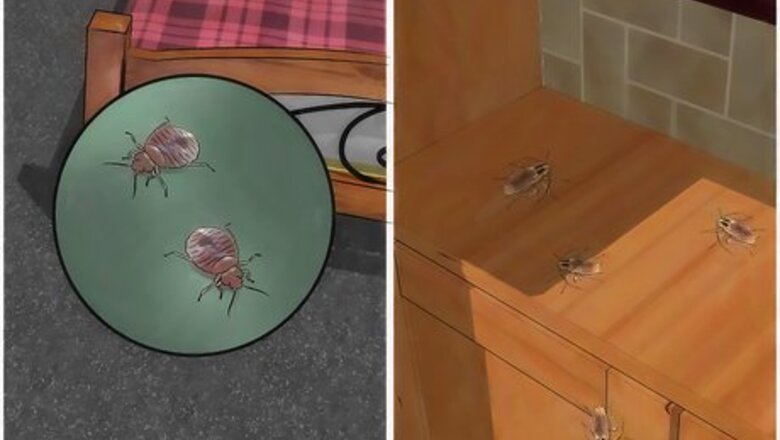
views
Ridding your Home of Pests
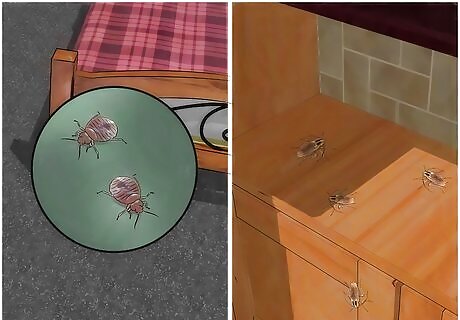
Identify the pest. While the preventative steps are similar for all types of pests, you will want to focus on removing certain types of food (i.e. ripe melon for fruit flies) or cleaning certain areas (vacuuming the carpet for fleas), depending on the pest. If you decide to use a pesticide, you will need to make sure it is suitable for the pest you are trying to kill.
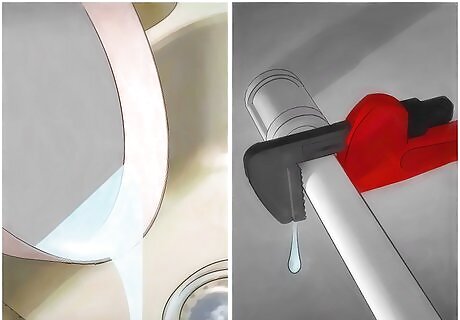
Remove standing water. Insects and rodents need water to survive. Keep your bathroom and kitchen areas as dry as possible. Fix leaking pipes. Don't let water collect in trays under plants. Don't leave your pet's water out overnight.
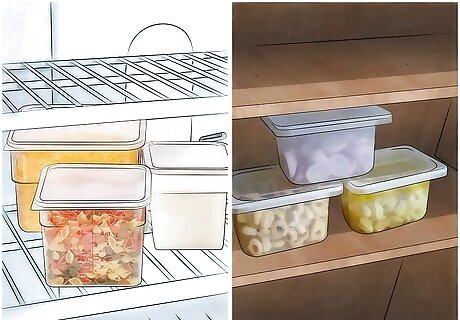
Keep your kitchen clean and all food in containers. Food attracts pests. Ripe fruit will draw fruit flies. Unsealed grains will attract mealy moths. Flies and cockroaches will eat any crumbs they can find. A clean kitchen is a key step in ridding your home of pest. Wipe up any spills with soap and water. A paper towel or dish towel alone may not be enough. Regularly unplug your toaster and remove crumbs. Store your food in sealed glass or plastic containers. Lids that clamp shut work better than screw-on lids. Keep ripe fruit, as well as rice and other long-term storage items, in the refrigerator. Store pet food in a clean, sealed garbage can so that rodents cannot get to it. Wash dishes daily, or submerge them in soapy water until you can get to them. Take out the trash daily. Used sealed trash cans and be sure to keep them clean.
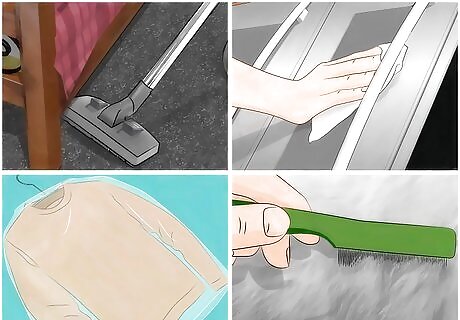
Keep your house clean and clutter free. This will remove hiding places for insects, as well as removing their eggs. Vacuum regularly. In particular, vacuum the affected areas using a crevice tool. Dispose of the vacuum cleaner bag in a sealed plastic bag, so no pests can escape. Comb and wash your pet frequently. If it has fleas, talk to your vet about flea medication. Get rid of clutter where pests hide, such as stacks of newspaper, magazines, or cardboard. Clean appliances by unplugging them and sweeping them out, vacuuming, then wiping down with a damp rag. Make sure to let the appliance dry completely before reconnecting the appliance to the power source. Store clothing and linens in sealed plastic boxes or bags to protect them from moths and to remove homes for mice and rats.
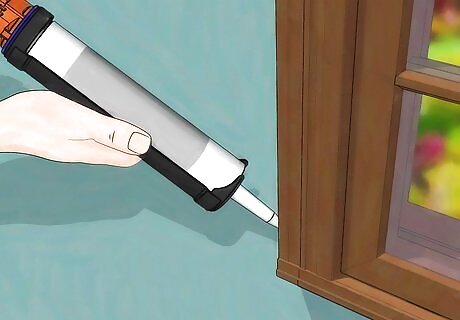
Deny access to your home. Pests frequently enter through poorly sealed windows or doors, or through cracks in walls and floorboards. Removing points of entry is key if you wish to keep your home pest free. Use silicone caulk to seal any cracks and crevices in baseboards, moldings, cupboards, pipes, ducts, sinks, toilets or electrical outlets. Place screens in front of heating and cooling vents. Repair holes in existing screens. Install screens and weather-stripping on doors and windows. Keep vegetation, mulch, stacked firewood, and other debris at least 18 inches (45.7 cm) form your home. Ensure all cracks, crevices and gaps around pipes and other penetrations on the walls of your home are properly sealed.
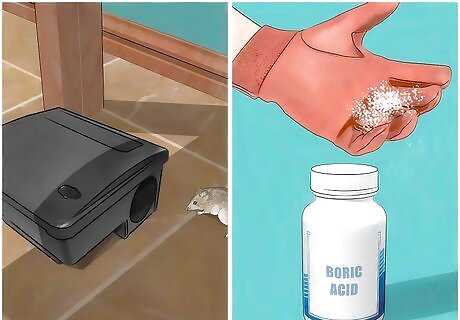
Try the less toxic pesticides first if other preventative measure fail. Less toxic pesticides are safer for both you and the environment. Dust boric acid on cracks and crevices. It is poisonous to crawling insects like ants, lizards, cockroaches, and silverfish, but is far less toxic to humans. Try tamper-resistant bait boxes, which are safer than sprays, powders or pellets, all of which spread pesticide residues. Bait boxes are particularly recommended in areas where food, plates, or cookery are stored. Look for bait boxes that use a nonvolatile chemical like boron, and be sure to keep them out of reach of children. Try insecticidal or fatty-acid soaps. They kill soft-bodied insects like fleas and mites on contact, cut are practically harmless to humans and mammals, unless ingested.
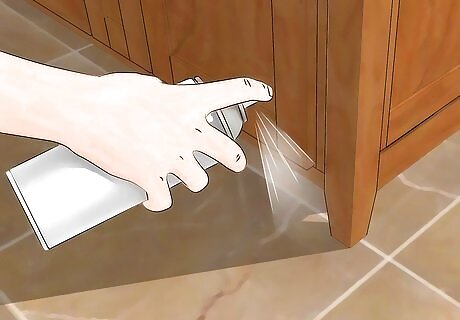
Use more volatile pesticides if necessary. Avoid frequent application; use them only to target specific threats. Read the label to be sure you have the right pesticide and are using it correctly. Pesticides labeled “broad spectrum” kill many pests, while those labeled “selective” work only against a few. Read the directions for use to be sure the pesticide will work for you. Start with less toxic pesticides. Check the label for the “signal” word that indicates how dangerous the product is to humans. “Danger” means poisonous or corrosive. “Warning” means moderately hazardous. “Caution” means least hazardous. Never use outdoor pesticides indoors. They last longer and are more volatile. Provide adequate ventilation. Open windows and run fans. If the pesticide requires an unventilated room, leave the house. Apply sprays to limited areas, such as cracks. Always remove pots, pans, dishes and food before spraying. Let the spray dry before replacing. Never dump leftover pesticides in the garbage or down the drain. Check with your public works department about how to dispose of them.
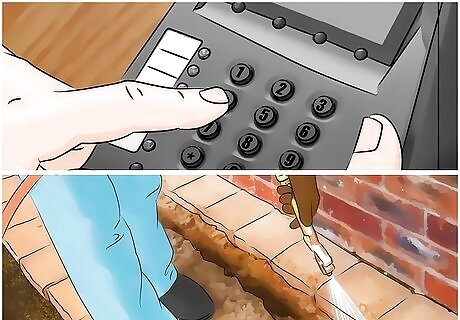
Consider getting professional help. If preventative measures and over-the-counter pesticides do not work, you may be better off paying for pest control services.
Keeping Your Yard and Garden Free of Pests
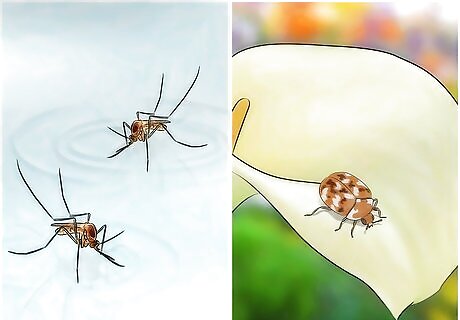
Identify the pest. While the preventative steps are similar for all types of pests, you will want to focus on certain types of decoy, beneficial predator, or pesticide depending on the pest.
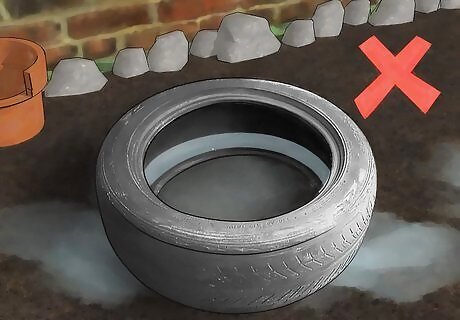
Keep your yard free of pests by removing hiding places and breeding sites. Piles of wood under or around your home attract ants. Tree clippings, fallen leaves or dropped fruit may harbor insects. Pet droppings attract flies. Standing water breeds mosquitoes.
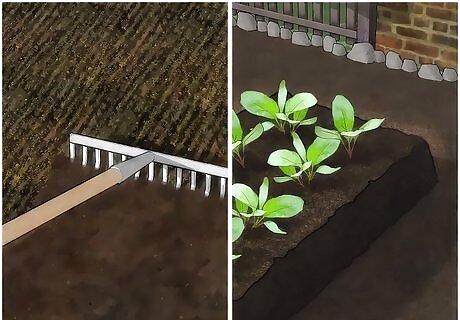
Prepare your garden to limit pests. A carefully tended garden with good drainage will attract fewer unwanted plants and insects. Consider a raised bed, particularly for clay soil with poor drainage. Before planting, try tilling to break up the dirt, and add sand for better drainage. Clean up debris to remove homes for pests. Mulch to prevent weeds, but be sure to pull back the mulch from the plants you are growing, as mulch can provide a home for insect pests.

Plant the right mix of plants to combat pests. Monocultures are a delight for pests, and exotic plants are often vulnerable to local pests. By varying what you plant year-to-year and row to row, you can cut down on pests. Select healthy seedlings that are appropriate for your area. Native plants, in particular, are frequently more resistant to local pests. Alternate rows with different types of plants, and mix ornamentals in amongst your edibles. Pests are less likely to spread if another edible plant is not nearby. Don't plant the same plants in the same space year after year. That way, you can save your plants from being ravaged by pests that survived the winter. To get rid of nematodes (worms that eat roots), plant a thick cover of marigolds one season, then turn them under the soil. Next year, you can plant whatever you like with no fear of nematodes.
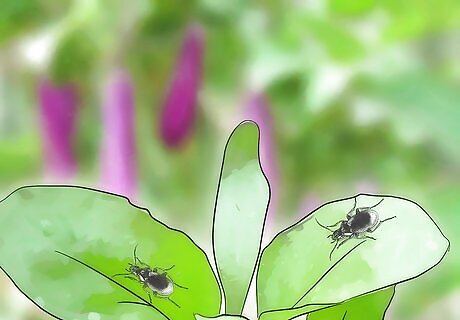
Plant decoys to lure insects away. Growing a single decoy weed amongst your cultivated crops can keep them pest free, with a little work. Redroot pigweed will attract blister beetles away from tomatoes. Be sure to check the weed each morning and shake the beetles off into soapy water to get rid of them. Arugula will attract flea beetles, which also eat eggplant, brassicas, and potatoes. Check the arugula every day and use a handheld vacuum to suck up the beetles. Planting nasturtiums at the base of tomato plants will attract aphids. Remove the flower and throw it away once it has attracted a good number of aphids.
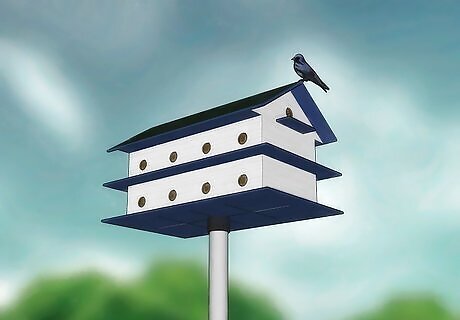
Attract beneficial predators to fight pests. Birds and predatory insects can fight unwanted insects without the need for pesticides. Install a purple martin house. These bird eat many of the larger insects that pray on garden plants. Plant flowers that will attract beneficial insects, such as wasps that eat caterpillars. Try members of the umbel family: dill, Queen-Anne's-lace, parsley, and carrots. Sweet alyssum, all kinds of mint, and chamomile are also effective. Your local County Cooperative Extension Service, nursery, or garden association will have more information on how to attract beneficial predators. Purchase predatory insects or microscopic pathogens such as fungi and bacteria. You can often buy them at your local garden store.
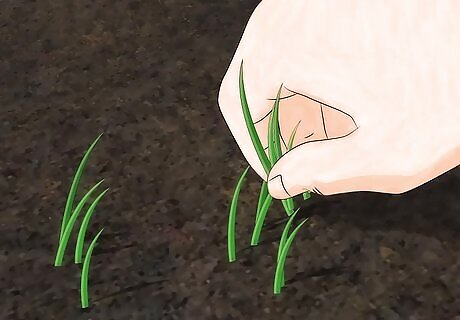
Get your hands dirty. Use spading, hoeing, and hand picking to remove weeds that provide food and shelter for pests. Set traps for insects and mice.
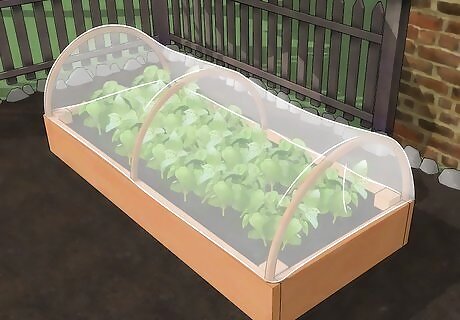
Use row covers to protect seeded beds, transplants, or young plants. They are an excellent barrier against a wide range of pests. When covering seeded beds or transplants, leave plenty of slack in the material to allow for growth, and be sure to bury the edges in the soil so that pests don't sneak in. You can leave row covers over crops like onions and carrots all season. Other crops, such as beans or cabbage should be uncovered once they are well grown. Plants like squash that require pollination by insects must be uncovered when they start to flower, or can be hand pollinated. In hot weather, be sure to remove covers to prevent excessive heat.

Try biochemical pesticides. Pesticides like pheromones and juvenile insect hormones can protect your plants, and are harmless to humans.
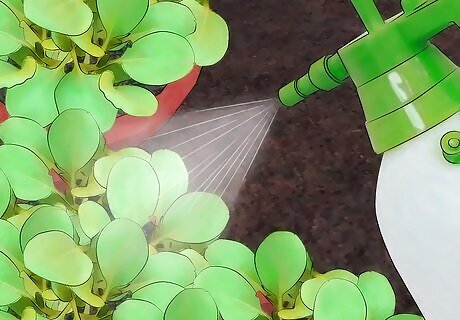
Use pesticides if necessary to combat pest. Particularly on edible plants, you will want to use the least toxic pesticide possible to get the job done. Read the label to be sure you have the right pesticide and are using it correctly. Pesticides labeled “broad spectrum” kill many pests, while those labeled “selective” work only against a few. Read the directions for use to be sure the pesticide will work for you. Check the label for the “signal” word that indicates how dangerous the product is to humans. “Danger” means poisonous or corrosive. “Warning” means moderately hazardous. “Caution” means least hazardous. Never dump leftover pesticides on the lawn, in the garbage or down the drain. Check with your public works department about how to dispose of them.










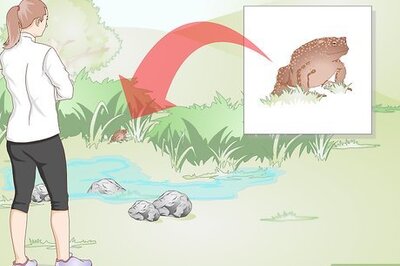

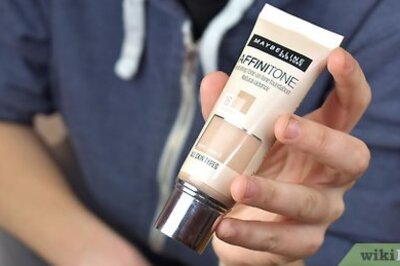
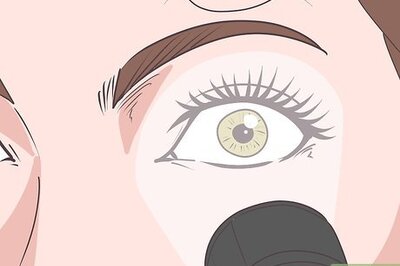






Comments
0 comment